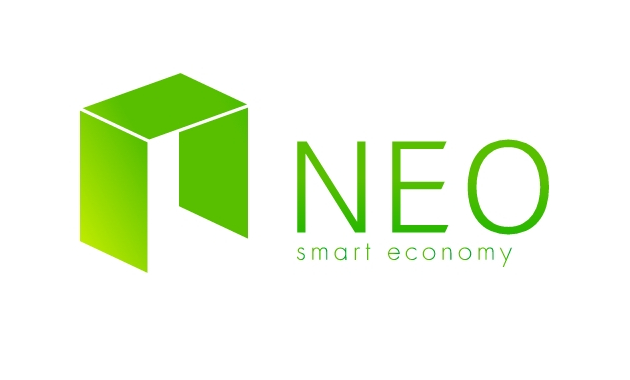-
 Bitcoin
Bitcoin $103,972.0548
-0.41% -
 Ethereum
Ethereum $2,507.7551
-3.09% -
 Tether USDt
Tether USDt $1.0001
0.02% -
 XRP
XRP $2.3654
-3.95% -
 BNB
BNB $650.0713
-1.69% -
 Solana
Solana $172.5109
-2.42% -
 USDC
USDC $0.9997
-0.02% -
 Dogecoin
Dogecoin $0.2312
-6.80% -
 Cardano
Cardano $0.8038
-4.29% -
 TRON
TRON $0.2651
-0.09% -
 Sui
Sui $4.0060
-1.25% -
 Chainlink
Chainlink $17.0053
-1.94% -
 Avalanche
Avalanche $24.7119
-4.51% -
 Stellar
Stellar $0.3057
-4.28% -
 Shiba Inu
Shiba Inu $0.0...01587
-6.10% -
 Hedera
Hedera $0.2058
-5.97% -
 Toncoin
Toncoin $3.4100
-2.26% -
 Hyperliquid
Hyperliquid $24.8813
-4.62% -
 Bitcoin Cash
Bitcoin Cash $407.8371
-5.21% -
 Polkadot
Polkadot $5.0856
-3.53% -
 Pi
Pi $1.1311
45.20% -
 UNUS SED LEO
UNUS SED LEO $8.3403
1.05% -
 Litecoin
Litecoin $99.8674
-4.83% -
 Monero
Monero $332.9490
2.49% -
 Pepe
Pepe $0.0...01355
-2.37% -
 Bitget Token
Bitget Token $4.8630
-2.12% -
 Dai
Dai $0.9999
-0.01% -
 Ethena USDe
Ethena USDe $1.0002
0.00% -
 Uniswap
Uniswap $6.8955
-8.08% -
 Bittensor
Bittensor $458.4408
-1.29%
How to buy and sell NEO coin
To purchase NEO coins, choose a reputable exchange, verify your identity, deposit funds, place a buy order either at market price or with a specific limit, and store the coins securely in an exchange account or personal wallet.
Nov 07, 2024 at 09:56 pm

How to Buy and Sell NEO Coin: A Comprehensive Guide to Trade the Digital Asset
Introduction
NEO, formerly known as AntShares, is a blockchain platform that aims to create a decentralized ecosystem for the development and deployment of smart contracts. The platform's native currency, NEO, is used to pay for transaction fees and storage costs. In this article, we will provide a comprehensive guide on how to buy and sell NEO coins, covering the different methods and platforms available to investors.
Step 1: Choose a Cryptocurrency Exchange
The first step in buying or selling NEO coins is to choose a reputable cryptocurrency exchange. Several exchanges support NEO trading, each with its features, fees, and security measures. Some of the popular exchanges include:
- Binance: A leading global exchange known for its large trading volume, low fees, and a wide range of cryptocurrencies supported.
- KuCoin: An innovative exchange offering a user-friendly interface, support for multiple cryptocurrencies, and low trading fees.
- Huobi Global: A veteran exchange with a strong reputation for security, offering a diverse range of cryptocurrencies and trading pairs.
- OKX: A popular exchange known for its advanced trading tools, high liquidity, and support for various cryptocurrencies.
Step 2: Create an Account and Verify Your Identity
Once you have selected an exchange, you need to create an account by providing your personal information and setting up a secure password. Most exchanges also require users to verify their identity for security and regulatory compliance. Typically, this involves submitting proof of identity, such as a government-issued ID or passport, and proof of residence, such as a utility bill or bank statement.
Step 3: Deposit Funds into Your Exchange Account
To buy NEO coins, you need to deposit funds into your exchange account. Most exchanges support a variety of deposit options, including bank transfers, credit/debit card deposits, and cryptocurrency transfers. The availability of these options may vary depending on the exchange and the user's location. Choose the most convenient and cost-effective option for you.
Step 4: Place a Buy Order
Once your exchange account is funded, you can place a buy order for NEO coins. The buy order specifies the amount of NEO you want to purchase and the price you are willing to pay. There are two main types of buy orders:
- Market Order: A market order is executed immediately at the current market price. It is the simplest type of order, but it does not guarantee a specific price.
- Limit Order: A limit order allows you to set a specific price at which you want to buy NEO coins. If the market price reaches or exceeds your limit price, your order will be executed.
Step 5: Store Your NEO Coins
Once your buy order is executed, the NEO coins will be credited to your exchange account. You can leave your coins on the exchange or withdraw them to a personal wallet for added security. Hardware wallets, such as the Ledger Nano or Trezor, offer the highest level of security for storing cryptocurrencies offline.
Step 6: Place a Sell Order
To sell NEO coins, you can place a sell order on an exchange. Just like buy orders, sell orders can be market orders or limit orders. Choose the order type that best suits your trading strategy.
- Market Order: A market order will sell your NEO coins at the current market price immediately.
- Limit Order: A limit order allows you to set a specific price at which you want to sell your NEO coins. If the market price falls to or below your limit price, your order will be executed.
Step 7: Withdraw Your Funds
Once your sell order is executed, the proceeds from the sale of the NEO coins will be credited to your exchange account. You can withdraw the funds to your bank account or use them to purchase other cryptocurrencies.
Conclusion
Buying and selling NEO coins involves several steps, including choosing an exchange, creating an account, depositing funds, placing a buy or sell order, storing the coins, and withdrawing the funds. By following these steps and understanding the different order types, you can efficiently trade NEO coins and participate in the digital asset market.
Disclaimer:info@kdj.com
The information provided is not trading advice. kdj.com does not assume any responsibility for any investments made based on the information provided in this article. Cryptocurrencies are highly volatile and it is highly recommended that you invest with caution after thorough research!
If you believe that the content used on this website infringes your copyright, please contact us immediately (info@kdj.com) and we will delete it promptly.
- Bring Me The Horizon’s Oli Sykes and partner Alissic announce they are expecting twins.
- 2025-05-12 07:20:13
- Best Meme Coin Presales to Buy This Week—Troller Cat's Game Center Ignites While Dogwifhat, AI Companions Hold
- 2025-05-12 07:20:13
- Trump's Red, White, and Meme-Colored Curveball Derails GENIUS Act
- 2025-05-12 07:15:12
- BTFD Coin (BTFD) – Where Bulls Triple Their Bags
- 2025-05-12 07:15:12
- BTFD Coin: The Breakout Meme Coin That's Turning Heads
- 2025-05-12 07:10:13
- PEPE Price Prediction: Analyst Forecasts Dogecoin-Style Rally Above $10 Billion
- 2025-05-12 07:10:13
Related knowledge

What is Ethereum’s Slashing mechanism and how to punish malicious behavior?
Feb 20,2025 at 03:08am
Key PointsOverview of slashingDifferent types of slashing in EthereumIncentives and consequences of slashingIdentifying and reporting slashed validatorsOngoing discussions and potential improvementsEthereum's Slashing Mechanism: Punishing Malicious BehaviorEthereum's slashing mechanism is an essential tool for ensuring network security and punishing mal...

What is the verifier node of Ethereum and how to become a verifier?
Feb 19,2025 at 06:00pm
The Verifier Node of Ethereum: A Comprehensive GuideKey Points:What is a Verifier Node?How to Become a Verifier NodeResponsibilities and Rewards of a Verifier NodeMinimum Requirements for Becoming a Verifier NodePotential Difficulties in Running a Verifier Node1. What is a Verifier Node?A Verifier Node is an independent entity on the Ethereum network th...

What is Ethereum’s staking, and how to participate and earn money?
Feb 19,2025 at 04:37pm
Key Points:Understanding Ethereum's Staking MechanismSteps to Participate in StakingBenefits and Rewards of StakingSecurity and Risk ConsiderationsTechnical Requirements and Hardware OptionsPotential Challenges and Troubleshooting TipsFAQs on Ethereum StakingWhat is Ethereum's Staking?Proof-of-Stake (PoS) is a consensus mechanism used in blockchain netw...

What is Ethereum’s DAO (Decentralized Autonomous Organization) and how does it work?
Feb 20,2025 at 03:12am
Key PointsDefinition and Structure of a DAOGovernance and Decision-Making in DAOsBenefits and Use Cases of DAOsChallenges and Limitations of DAOsWhat is Ethereum's DAO (Decentralized Autonomous Organization) and How Does It Work?Definition and Structure of a DAOA Decentralized Autonomous Organization (DAO) is an innovative governance and management fram...

What is Ethereum's multi-signature wallet and how to improve security?
Feb 20,2025 at 02:18pm
Key Points:Understanding the Concept of a Multi-Signature WalletBenefits and Drawbacks of Multisig WalletsRequirements for Setting Up a Multisig WalletStep-by-Step Guide to Generating a Multisig WalletImplementing Strategies for Enhanced Security1. Understanding the Concept of a Multi-Signature WalletA multi-signature (multisig) wallet in the Ethereum e...

What is Ethereum's oracle and how to provide data for smart contracts?
Feb 21,2025 at 01:30am
Key Points:Understanding the concept of oracles in EthereumExploring different types of oraclesDetailed guide on how to provide data for smart contractsAddressing potential challenges and considerationsWhat is Ethereum's Oracle?Oracles are crucial components in the Ethereum ecosystem, enabling smart contracts to access real-world data and off-chain even...

What is Ethereum’s Slashing mechanism and how to punish malicious behavior?
Feb 20,2025 at 03:08am
Key PointsOverview of slashingDifferent types of slashing in EthereumIncentives and consequences of slashingIdentifying and reporting slashed validatorsOngoing discussions and potential improvementsEthereum's Slashing Mechanism: Punishing Malicious BehaviorEthereum's slashing mechanism is an essential tool for ensuring network security and punishing mal...

What is the verifier node of Ethereum and how to become a verifier?
Feb 19,2025 at 06:00pm
The Verifier Node of Ethereum: A Comprehensive GuideKey Points:What is a Verifier Node?How to Become a Verifier NodeResponsibilities and Rewards of a Verifier NodeMinimum Requirements for Becoming a Verifier NodePotential Difficulties in Running a Verifier Node1. What is a Verifier Node?A Verifier Node is an independent entity on the Ethereum network th...

What is Ethereum’s staking, and how to participate and earn money?
Feb 19,2025 at 04:37pm
Key Points:Understanding Ethereum's Staking MechanismSteps to Participate in StakingBenefits and Rewards of StakingSecurity and Risk ConsiderationsTechnical Requirements and Hardware OptionsPotential Challenges and Troubleshooting TipsFAQs on Ethereum StakingWhat is Ethereum's Staking?Proof-of-Stake (PoS) is a consensus mechanism used in blockchain netw...

What is Ethereum’s DAO (Decentralized Autonomous Organization) and how does it work?
Feb 20,2025 at 03:12am
Key PointsDefinition and Structure of a DAOGovernance and Decision-Making in DAOsBenefits and Use Cases of DAOsChallenges and Limitations of DAOsWhat is Ethereum's DAO (Decentralized Autonomous Organization) and How Does It Work?Definition and Structure of a DAOA Decentralized Autonomous Organization (DAO) is an innovative governance and management fram...

What is Ethereum's multi-signature wallet and how to improve security?
Feb 20,2025 at 02:18pm
Key Points:Understanding the Concept of a Multi-Signature WalletBenefits and Drawbacks of Multisig WalletsRequirements for Setting Up a Multisig WalletStep-by-Step Guide to Generating a Multisig WalletImplementing Strategies for Enhanced Security1. Understanding the Concept of a Multi-Signature WalletA multi-signature (multisig) wallet in the Ethereum e...

What is Ethereum's oracle and how to provide data for smart contracts?
Feb 21,2025 at 01:30am
Key Points:Understanding the concept of oracles in EthereumExploring different types of oraclesDetailed guide on how to provide data for smart contractsAddressing potential challenges and considerationsWhat is Ethereum's Oracle?Oracles are crucial components in the Ethereum ecosystem, enabling smart contracts to access real-world data and off-chain even...
See all articles





















































































